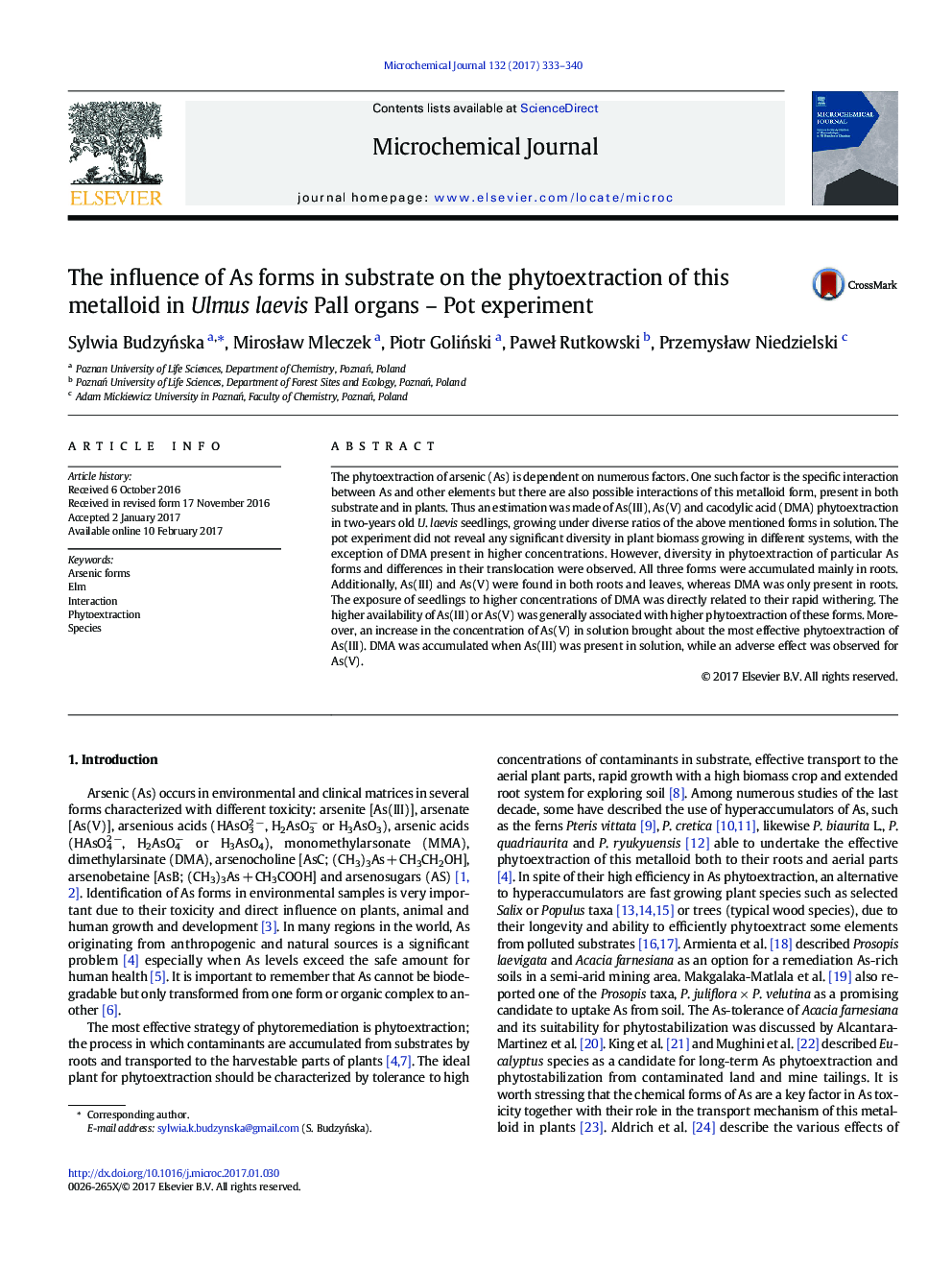| Article ID | Journal | Published Year | Pages | File Type |
|---|---|---|---|---|
| 5139194 | Microchemical Journal | 2017 | 8 Pages |
Abstract
The phytoextraction of arsenic (As) is dependent on numerous factors. One such factor is the specific interaction between As and other elements but there are also possible interactions of this metalloid form, present in both substrate and in plants. Thus an estimation was made of As(III), As(V) and cacodylic acid (DMA) phytoextraction in two-years old U. laevis seedlings, growing under diverse ratios of the above mentioned forms in solution. The pot experiment did not reveal any significant diversity in plant biomass growing in different systems, with the exception of DMA present in higher concentrations. However, diversity in phytoextraction of particular As forms and differences in their translocation were observed. All three forms were accumulated mainly in roots. Additionally, As(III) and As(V) were found in both roots and leaves, whereas DMA was only present in roots. The exposure of seedlings to higher concentrations of DMA was directly related to their rapid withering. The higher availability of As(III) or As(V) was generally associated with higher phytoextraction of these forms. Moreover, an increase in the concentration of As(V) in solution brought about the most effective phytoextraction of As(III). DMA was accumulated when As(III) was present in solution, while an adverse effect was observed for As(V).
Keywords
Related Topics
Physical Sciences and Engineering
Chemistry
Analytical Chemistry
Authors
Sylwia BudzyÅska, MirosÅaw Mleczek, Piotr GoliÅski, PaweÅ Rutkowski, PrzemysÅaw Niedzielski,
